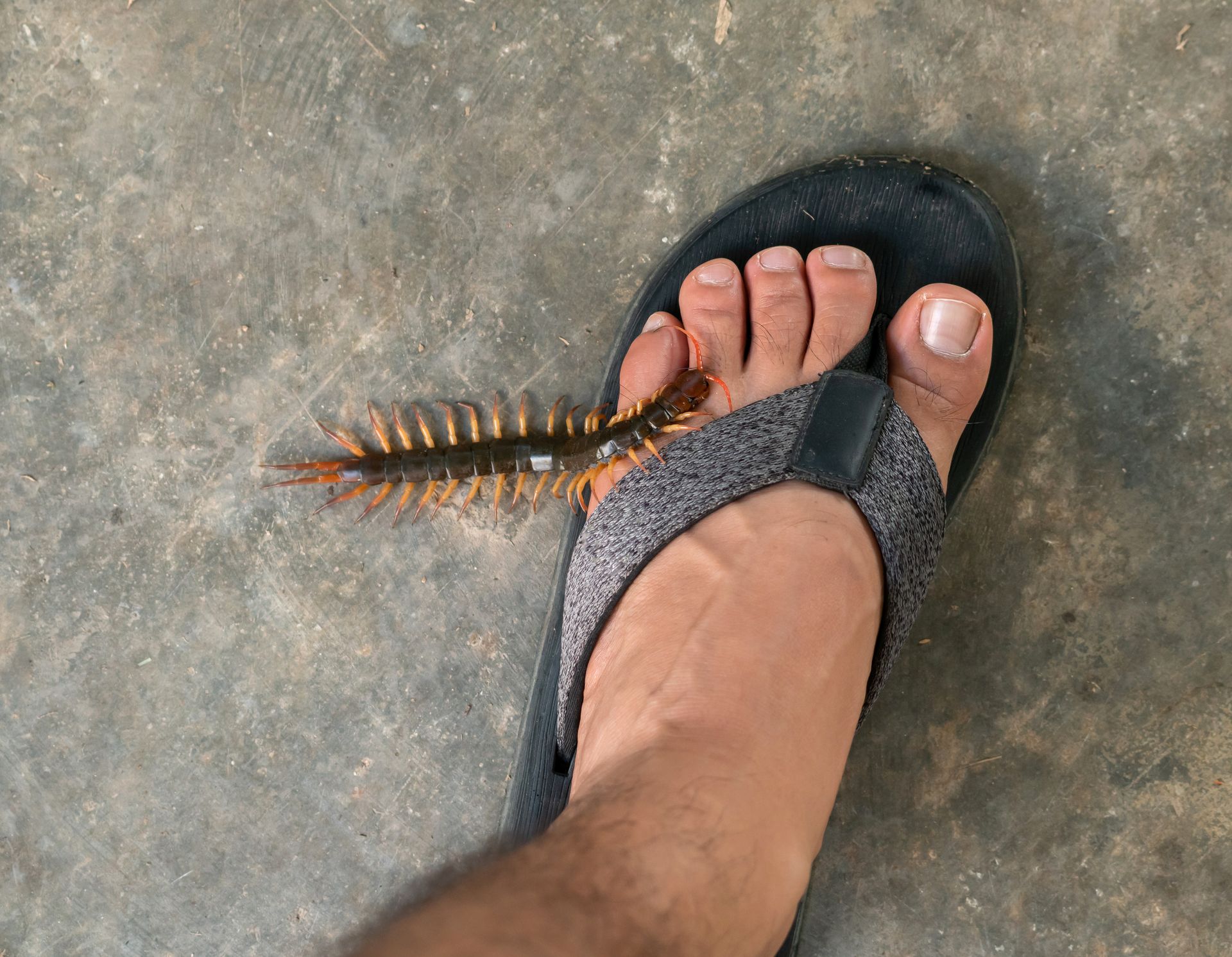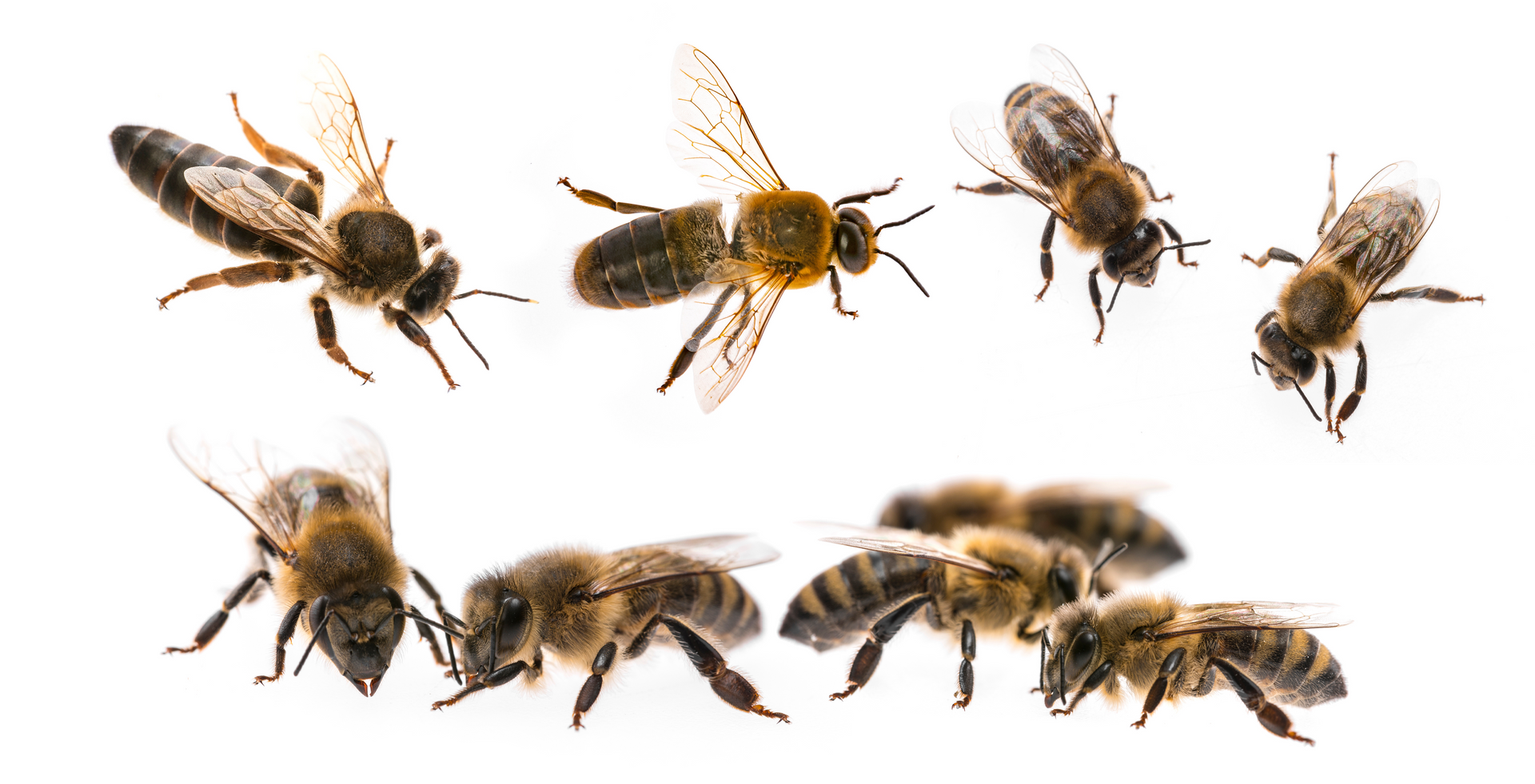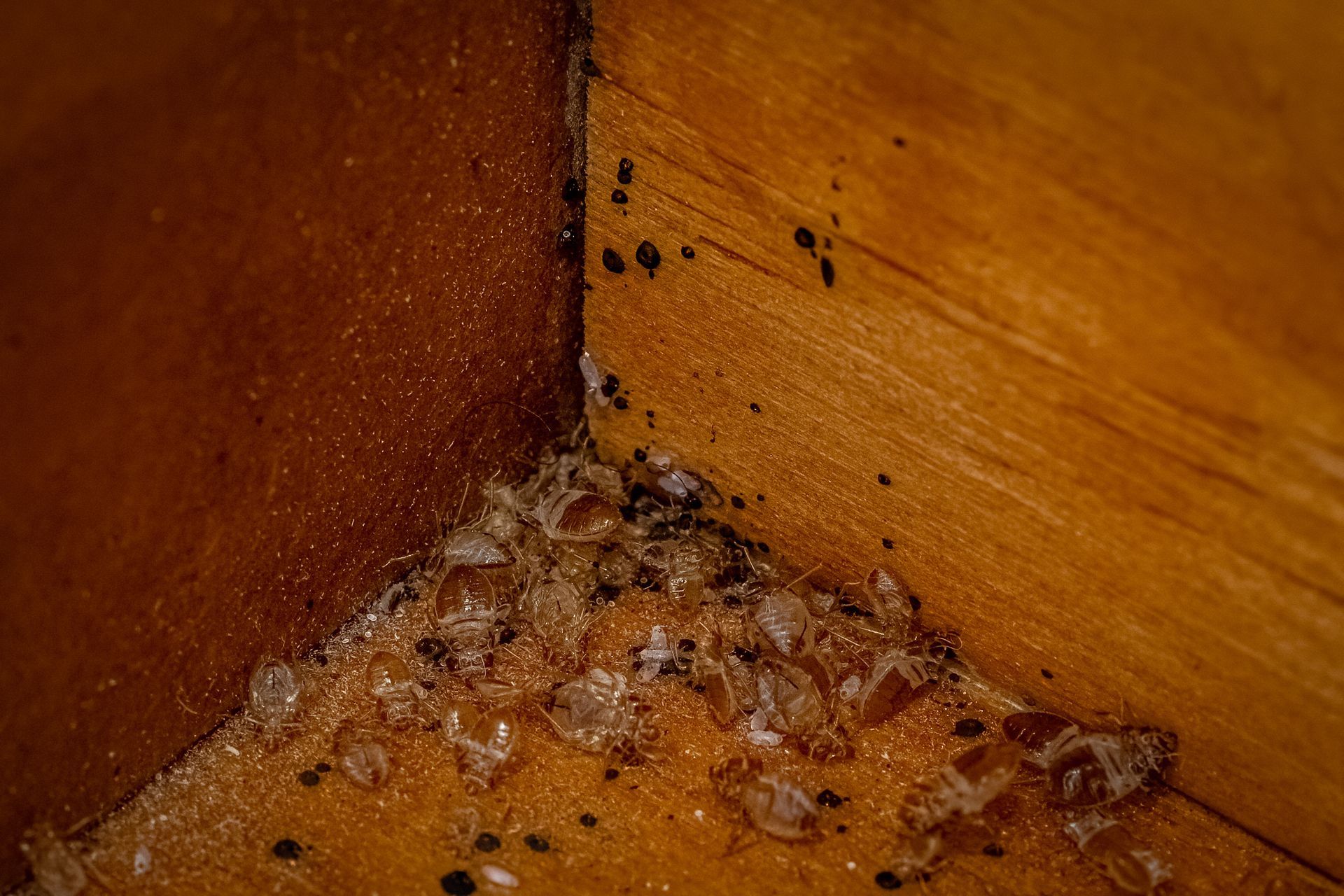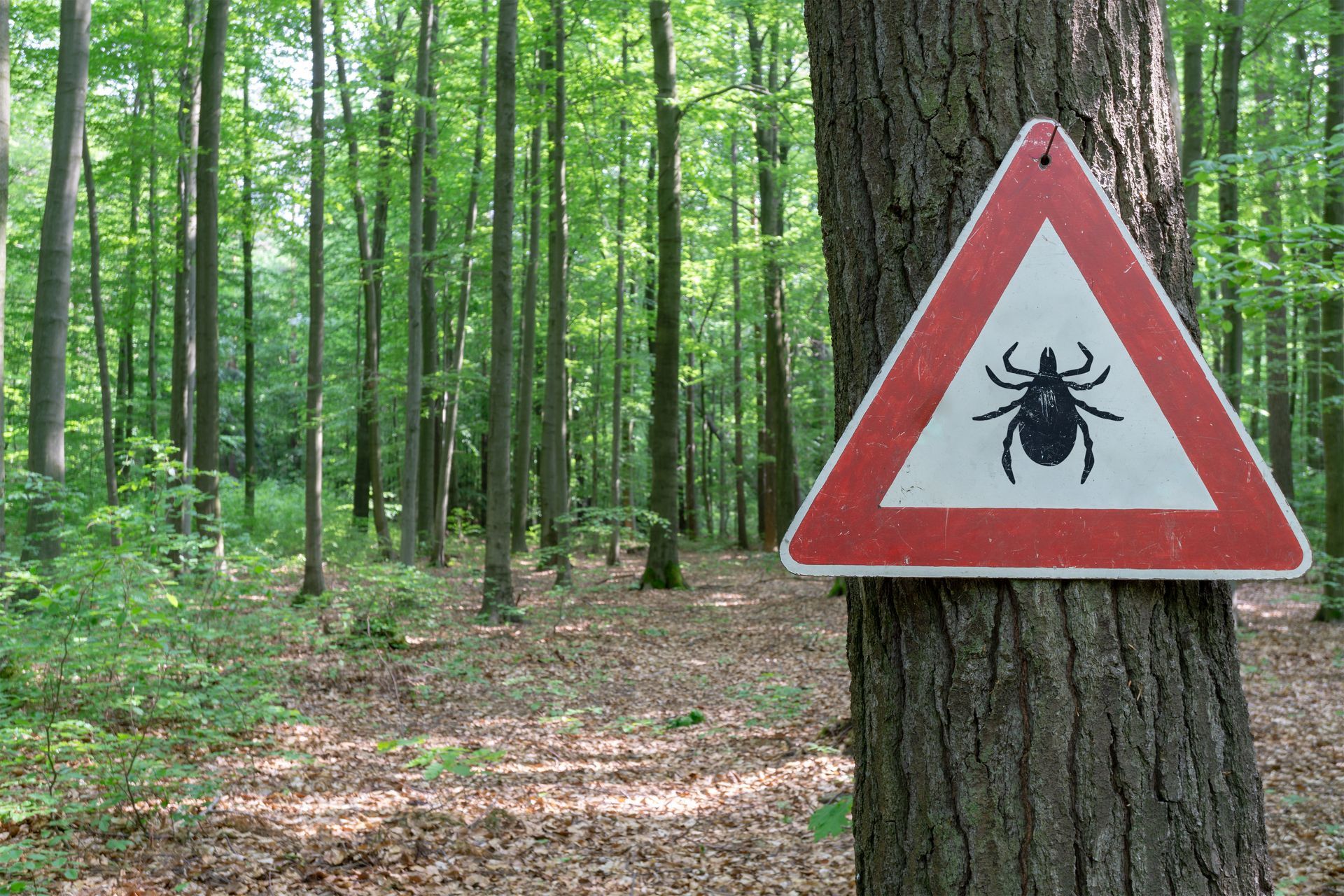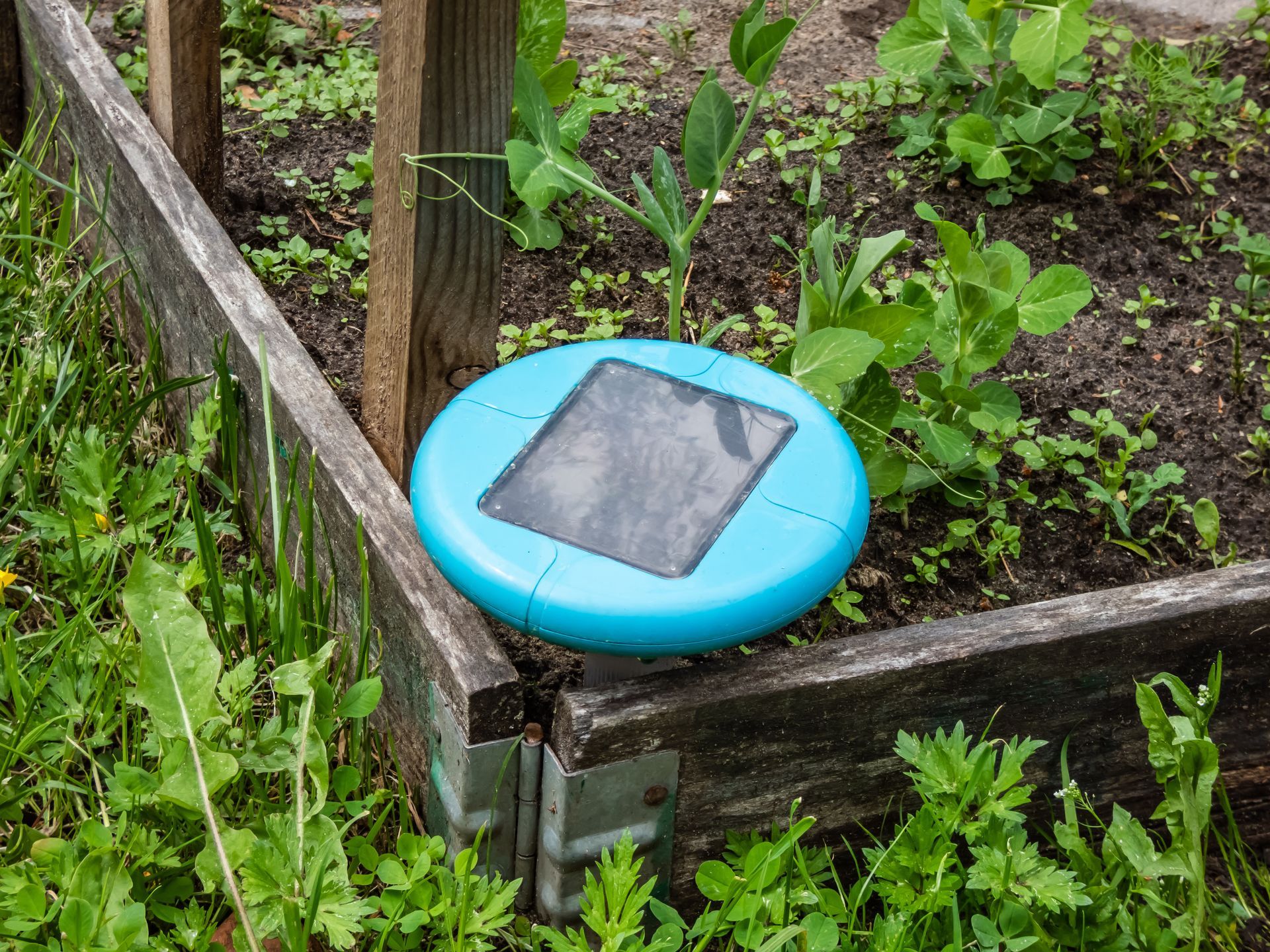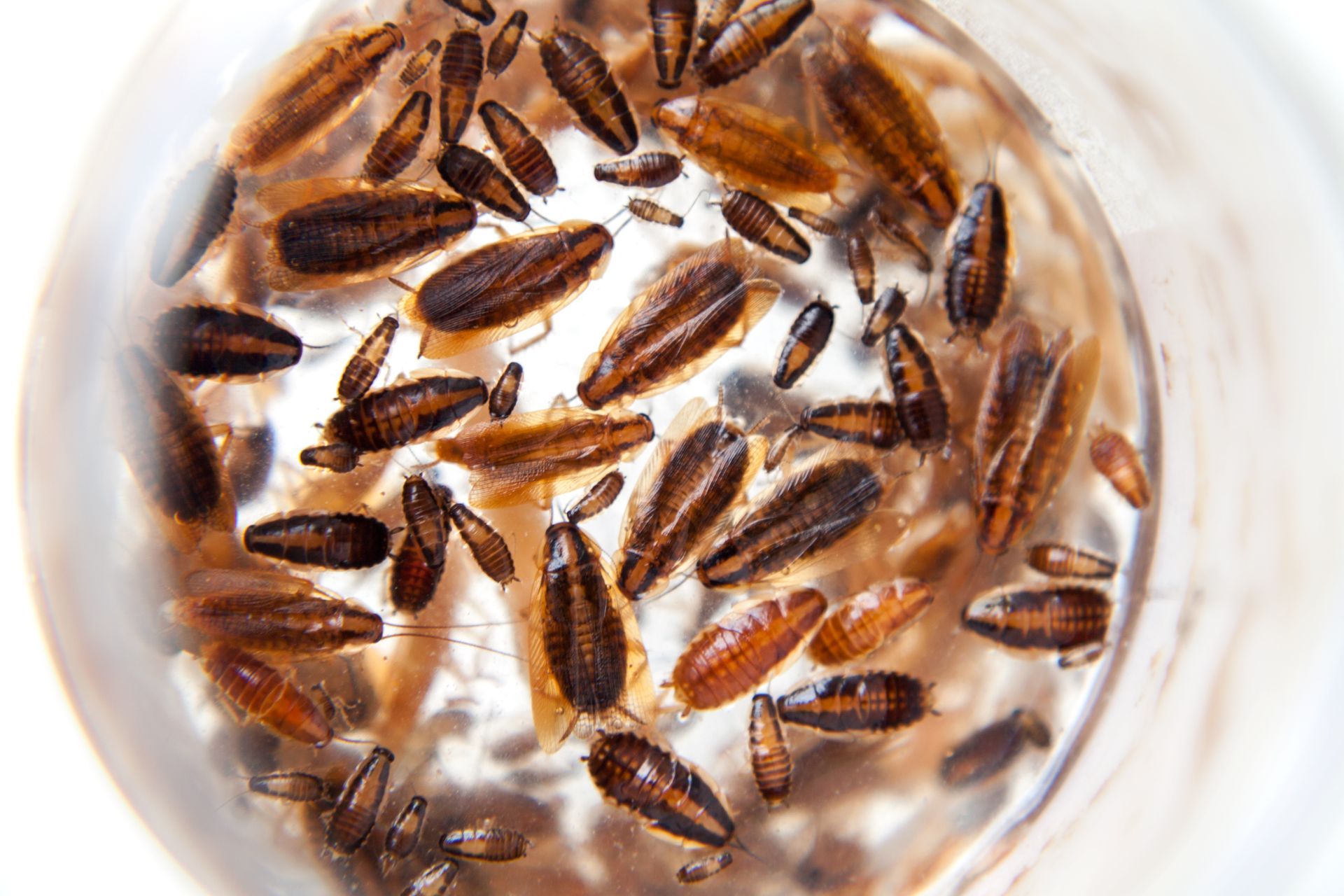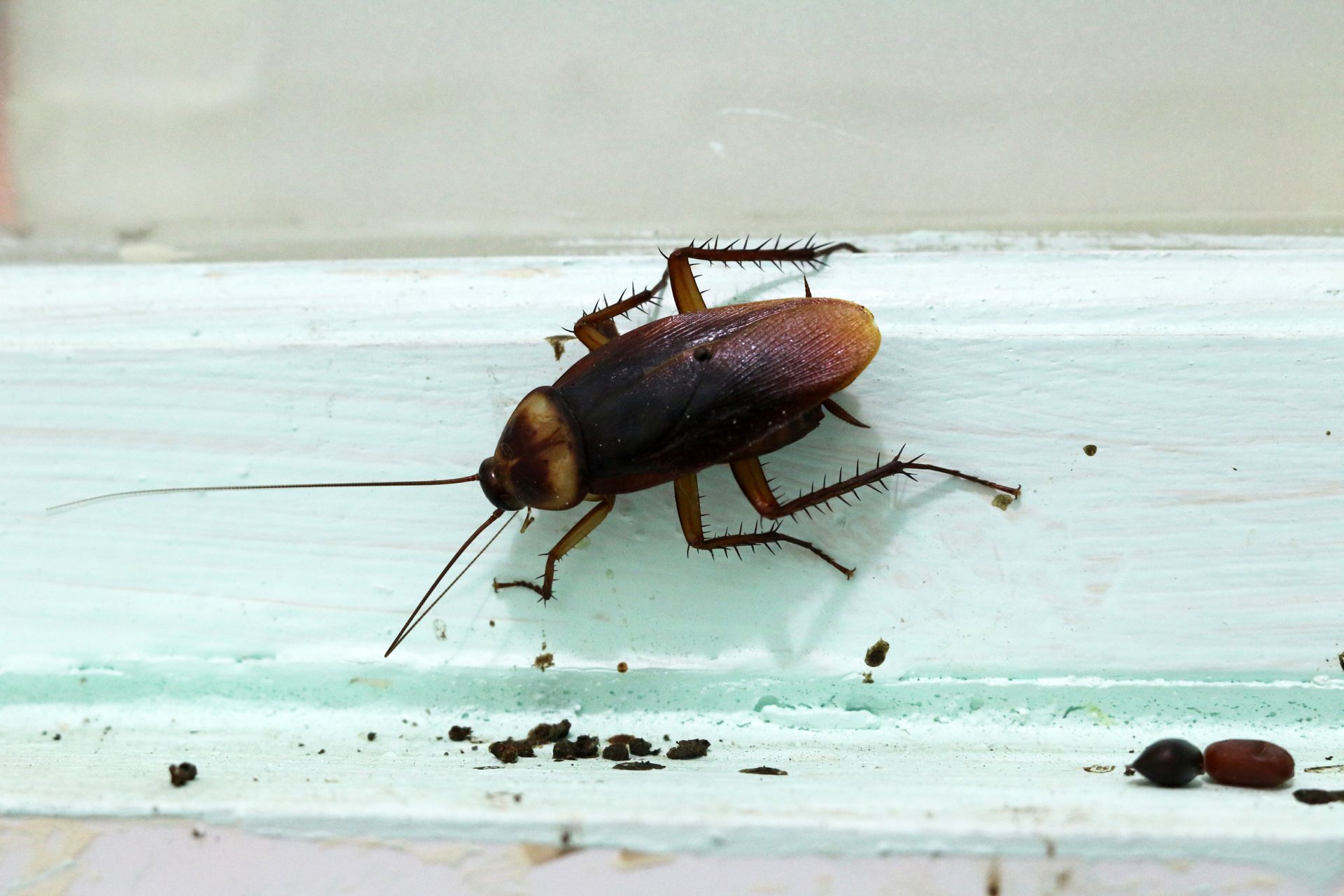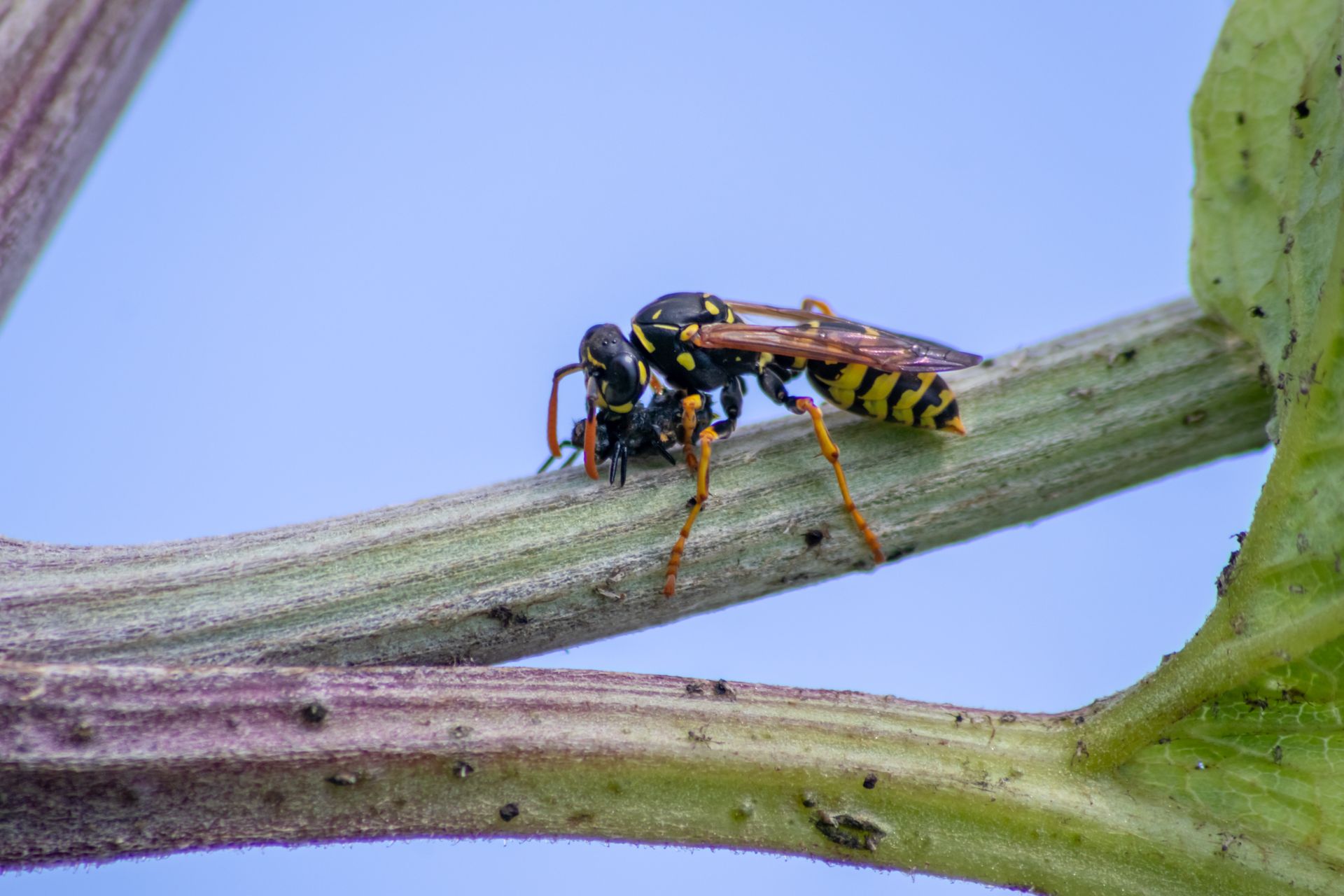What Are Japanese Beetles?
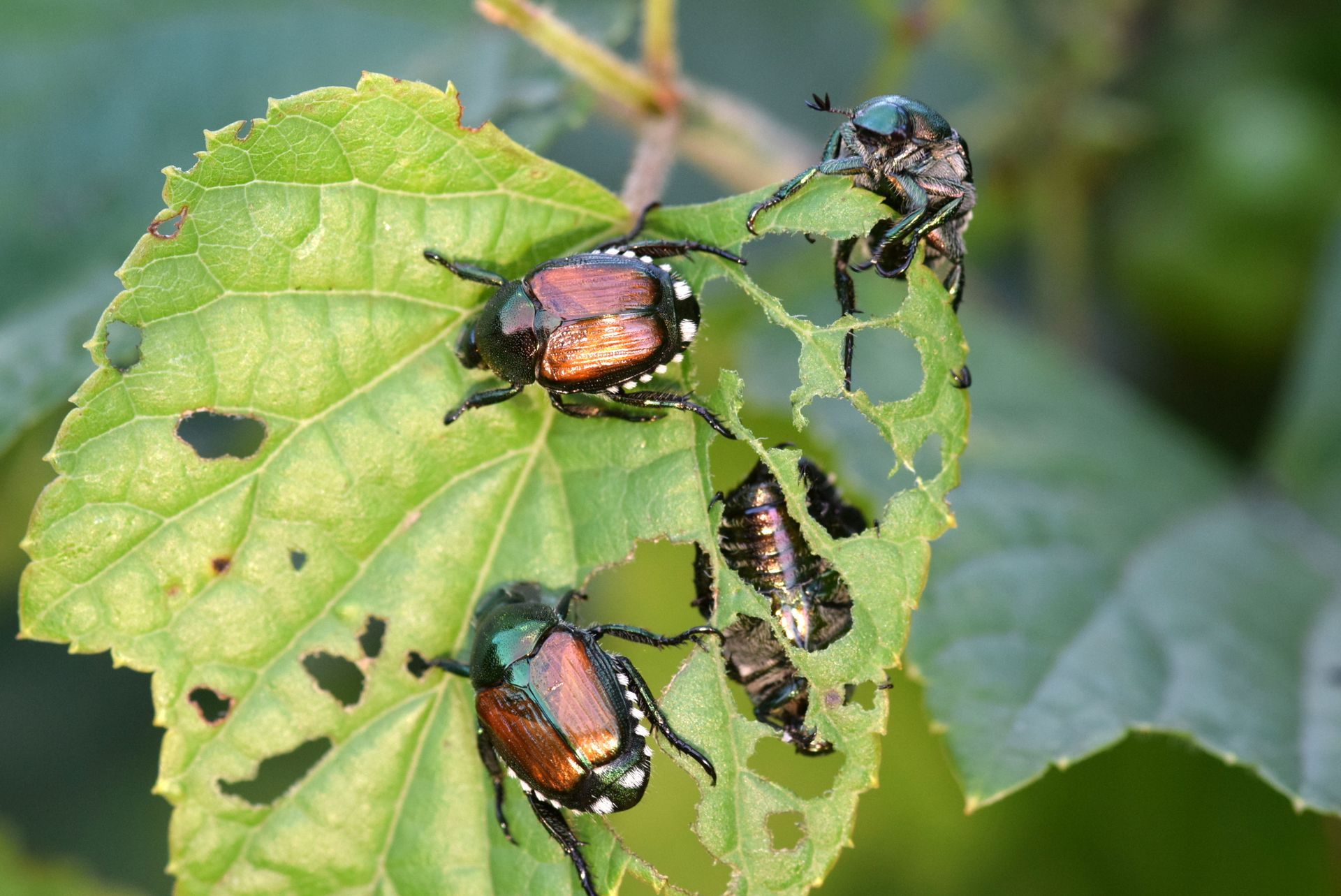
Japanese beetles (Popillia japonica) are a highly destructive invasive pest that first appeared in the United States in 1916 after being accidentally introduced into New Jersey. These insects are native to Japan where they are not a major pest due to natural predators but have since spread across the Eastern and Central United States. They are notorious for their extensive damage to over 300 species of plants including turf, ornamental, and agricultural crops. Adult Japanese beetles feed on the foliage, flowers, and fruits of plants which results in large, irregular holes and leaves behind skeletonized leaves. In their larval stage, known as white grubs, they feed on the roots of grasses which causes turf to brown and die in lawns, parks, and golf courses. Effective management of Japanese beetles requires addressing both the adult beetles and their larvae to mitigate their widespread impact.
Identifying Japanese Beetle
Identifying Japanese beetles is crucial for effective management and control as these pests can cause significant damage to a wide variety of plants.
Adults Japanese Beetle Appearance
Adult Japanese beetles are distinctive and easy to identify by their unique appearance. They are approximately 1/3 to 1/2 inch long, with shiny, oval, metallic-green bodies and bronze or copper-colored outer wings. One of their most recognizable features is the presence of six small tufts of white hair along the sides and back of their bodies under the edges of their wings, as well as five white patches of hair on each side of the abdomen and two patches at the tip. In this species, sexual dimorphism is evident, with the male individuals typically exhibiting a somewhat reduced size compared to their female counterparts. These beetles typically feed in groups which makes their metallic blue-green heads and tan wings a common sight during infestations.
Japanese Beetle Larvae Appearance
Japanese beetle larvae are C-shaped and range from translucent white to cream-colored with a yellowish-brown head with strong, dark-colored mandibles. These grubs have legs that are easy to see and vary in size from 1/8 inch to about one inch long. The larvae are covered with scattered long brown hairs interspersed with short, blunt spines. The organism's anatomy features a segmented structure, comprising a trio of thoracic sections, each equipped with a set of articulated limbs, followed by a series of ten distinct abdominal segments.
Japanese Beetle Pupae Appearance
Japanese beetle pupae undergo pupation within an earthen cell formed by the last larval stage. The pupae are approximately 1/2 inch long and 1/4 inch wide. Their coloration varies, starting from pale cream and gradually changing to metallic green as they age. This transformation stage is crucial as the beetle develops from the larval to the adult form while preparing to emerge as a fully developed Japanese beetle.
Japanese Beetle Life Cycle
The Japanese beetle undergoes a complete metamorphosis with four distinct life stages: egg, larva, pupa, and adult. The life cycle begins during the summer when females lay eggs in the soil of healthy, well-irrigated lawns and turf that gets lots of sun. These eggs hatch into larvae within 10 to 14 days. As the grubs grow, they go through three growth stages called instars where they become progressively larger. By late fall, the grubs are nearly full-sized and burrow deeper into the soil to overwinter.
In the spring, the grubs move back to the surface to resume feeding on grass roots for about four to six weeks before pupating. Pupation takes place within an earthen cell near the soil surface and lasts one to three weeks. Adult beetles emerge from the ground in late June or early July, ready to feed and mate. Adult Japanese beetles live for about 30 to 45 days, during which they feed on a wide variety of plants and cause extensive damage. Females periodically leave plants to burrow into the soil and lay eggs, repeating this cycle throughout the summer.
Where Are Japanese Beetles Found?
Japanese beetles are native to Japan but have spread to various parts of the world, including China, Russia, Portugal, Canada, and the United States. The initial discovery occurred at a plant cultivation facility in close proximity to the town of Riverton, New Jersey, during the year 1916. Since then, they have spread to many states including Wisconsin, Minnesota, Iowa, Missouri, Nebraska, Kansas, Arkansas, Oklahoma, Texas, South Dakota, Washington, North Dakota, and sporadic locations in California, Oregon, and Nevada.
The spread of Japanese beetles in the United States has been facilitated by favorable climatic conditions, the availability of a wide variety of host plants, and the absence of the natural predators that keep their population in check in Japan. Turfgrass expansion has also provided an excellent breeding ground for these pests. By 2015, the U.S. Department of Agriculture reported that Japanese beetles were fully or partially established in over 70 percent of the contiguous United States which makes them the most widespread turfgrass pests in the country.
Japanese Beetle Damage
Japanese beetles are a significant pest that cause extensive damage to a wide variety of plants including flowers, trees, shrubs, fruits, vegetables, field crops, and turf. The extensive damage caused by both the adult beetles and their larvae makes the Japanese beetle an economic and ecological threat that requires proactive management and control strategies.
Adult Japanese Beetle Damage
Adult Japanese beetles cause significant damage to the leaves, flowers, and fruits of more than 300 plant species. Their preferred plants include maples, roses, grapes, corn, plums, peaches, birches, willows, poplars, linden, apple, crabapple, cherry, elm, raspberry, currant, basil, Virginia creeper, hollyhock, marigold, soybean, and several types of turf grasses. The feeding damage leaves plants weakened and more susceptible to diseases. Here are the signs of beetle damage:
- Skeletonized leaves: Adult beetles feed on tissue between the major veins, giving leaves a lace-like appearance.
- Brown and fallen leaves: Damaged leaves turn brown and may fall off.
- Impact on young or unhealthy plants: Young or unhealthy plants may be stunted, injured, or even killed by severe, persistent feeding.
- Flowering plants: Healthy flowering plants like roses can survive beetle feeding, but the blossoms are often ruined.
- Fruits, vegetables, and herbs: These can tolerate limited leaf feeding but severe damage may affect plant growth and reduce crop yields.
Japanese Beetle Larvae Damage
Japanese beetle larvae, or grubs, cause significant damage to lawns and garden plants by chewing on grass roots, which reduces the grass's ability to take up water and nutrients. This feeding activity results in dead patches of grass that can be easily rolled back like a carpet due to the lack of root support. Healthy turf can typically tolerate up to 10 grubs per square foot, but severe grub infestations lead to extensive damage. Additionally, moles, skunks, crows, and other insect-feeding animals often dig up grubs, causing further damage to the turf. Proper lawn care practices are essential to promote a healthy lawn and mitigate the impact of grub damage.
Japanese Beetle Damage Impact
Economic Impact
Japanese beetles are one of the most significant turf-grass pests in the United States that costs an estimated $460 million per year to control according to the United States Department of Agriculture. They feed in pastures and crop fields which leads to the destruction of plants and reduces crop yields. Their varied diet makes them a threat to major staple crops which threatens the viability of yields in any area where they are a prevalent pest.
Ecological Impact
Japanese beetles have a significant ecological impact by reducing the available food for wildlife during both their larval and adult feeding stages. The damage caused by their feeding stresses plants which reduces their growth and makes them more susceptible to attacks by other insects and diseases. This disruption can have a cascading effect on local ecosystems, as weakened plants can alter the habitat and food sources for various animal species.
Social Impact
The presence of Japanese beetle larvae and adults can severely affect lawns, golf courses, sports fields, and parks which impacts recreational activities and the aesthetics of these areas. The larvae feeding on grass roots create brown patches which lead to unsightly and damaged turf. Additionally, these damaged areas attract birds and mammals that dig up the grass in search of grubs which causes further destruction.
How to Get Rid of Adult Japanese Beetles
Getting rid of adult Japanese beetles involves various strategies to manage their population effectively.
Physical Removal
Physically removing Japanese beetles is an effective non-chemical management practice that is particularly suited for smaller infestations over a limited number of plants. Handpick or knock the beetles into a bucket of soapy water to kill them and check your plants daily to minimize feeding damage. Beetle-damaged leaves emit air-borne chemicals that attract more beetles, so regularly removing them reduces the likelihood of new beetles being drawn to your plants.
Physical Barriers
Using physical barriers like fine netting can be an effective way to protect plants from Japanese beetle damage. These barriers prevent beetles from accessing and feeding on the plants. However, it is important not to cover plants in bloom that require pollination like fruit-bearing plants as the netting will also block pollinators. Instead, handpick beetles from blooming plants until they are done flowering and start to set fruit, at which point you can safely cover them with netting to protect against further beetle damage. This approach balances beetle control with the needs of pollinators to ensure healthy plant growth and fruit production.
Traps
Using traps to manage Japanese beetle populations is generally not recommended for home gardens, as they can attract more beetles than they capture and lead to increased damage. These traps use synthetic female sex pheromones and strong floral odors to lure beetles, but research has shown that more beetles are drawn to the traps than are caught. This can result in higher beetle activity and more damage to nearby plants. While traps can be useful for monitoring and detecting new infestations, they are not effective for mass trapping and suppressing established populations in garden settings.
Using Less Preferred Plants
Although Japanese beetles feed on a wide variety of plants, some species are less preferred and seldom damaged by these pests. When planning your landscape, consider incorporating these less preferred plants to minimize beetle damage. Examples of plants that Japanese beetles typically avoid include boxwood, clematis, chrysanthemum, conifers such as arborvitae, spruce, fir, and pine, daylily, geranium, ginkgo, Japanese tree lilac, forsythia, common lilac, magnolia, red and silver maple, oak, white poplar, redbud, rhododendron, and yew. Choosing these plants can help create a more resilient and beetle-resistant garden.
Using Pesticides
If physical removal and barriers are not practical or you wish to supplement non-chemical management, using pesticides can be an option to protect valued plants from Japanese beetle damage. However, it is crucial to use insecticides carefully to protect beneficial insects including pollinators, as well as birds, fish, and mammals. Consider hiring professional pest control, especially for treating trees, to ensure the safe and effective application of insecticides.
Low-risk insecticides
Low-risk insecticides offer an effective way to manage Japanese beetle infestations while minimizing harm to beneficial insects and the environment.
- Neem oil is another low-risk option that deters Japanese beetles for several days but also requires repeat applications because it is less effective against large infestations.
- Bacillus thuringiensis galleriae is another low risk insecticide that is moderately effective against adult beetles. It provides one to two weeks of protection without being toxic to bees and other beneficial insects.
Residual insecticides
Residual insecticides provide longer-lasting protection against Japanese beetles which makes them an effective option for managing infestations. Chlorantraniliprole offers two to four weeks of protection and is considered low risk to bees. Pyrethroids like bifenthrin, cyfluthrin, lambda cyhalothrin, and permethrin provide about two to three weeks of effectiveness. Additionally, carbaryl and acephate can offer one to two weeks of protection. However, it is important to note that pyrethroids, carbaryl, and acephate are toxic to bees and other pollinators, so caution should be exercised to minimize exposure to these beneficial insects.
Systemic insecticides
Systemic insecticides are absorbed by plants and distributed throughout their tissues to provide internal protection against pests. These insecticides can be applied as a soil drench or injection, a trunk spray, or a trunk injection which helps avoid pesticide drift when treating large trees. Trunk injections should be performed by certified tree care professionals. Imidacloprid and dinotefuran are classified as neonicotinoids and require only one application per year when applied to the soil. However, these insecticides are highly toxic to pollinators and should not be applied to soil within 4-5 feet of plants that attract pollinators. It's crucial to avoid treating bee-attractive plants or to wait until after blooming before application. Professional pesticide applicators have access to chlorantraniliprole, which is long-lasting and poses low risk to bees, and acephate, which should not be applied near bee-attractive plants until after bloom due to its toxicity to bees. Always follow the pesticide label directions and observe safety precautions to ensure proper and safe use.
Best Time to Manage Japanese Beetle Infestations
The best time to manage Japanese beetle infestations is starting in late June and early July when the beetles first appear in your yard and garden. Early intervention is crucial because damaged leaves emit feeding-induced odors that attract more beetles which can lead to larger infestations. Japanese beetles feed for six to eight weeks, so it is important to continue management efforts throughout this period until their numbers decrease.
How to Get Rid of Japanese Beetle Larvae
To get rid of Japanese beetle larvae, focus on treating white grubs in your lawn to prevent damage. Effective methods for managing grubs include:
Biological insecticides
Biological insecticides offer an environmentally friendly approach to controlling Japanese beetle larvae.
- Parasitic nematodes like Steinernema kushidai, Steinernema glaseri, and Heterorhabditis bacteriophora can be effective against grubs and generally do not affect beneficial insects. For optimal efficacy, the introduction of these microscopic worms should be timed to coincide with the post-hatching phase, when the larval forms have emerged and are actively present in the environment. This should be done during cool, overcast days or in the evening, with watering before and after application to prevent them from drying out.
- Another option is milky spore bacteria, Paenibacillus popilliae, which specifically infect Japanese beetle grubs without harming beneficial organisms. Bacillus thuringiensis galleriae is another bacteria that affects both adult beetles and larvae
- Two species of tiphiid wasps, Tiphia vernalis and Tiphia popilliavora, are effective biocontrol agents that target Japanese beetle grubs. Tiphia vernalis attacks overwintering grubs in the spring, while Tiphia popilliavora targets young grubs in late summer.
Preventive insecticides
Preventive insecticides are applied as a proactive measure against grub damage, particularly if a lawn has a recent history of infestation or if there significant signs of beetle activity. The best time to apply these treatments is from mid June to mid July, before the adult beetles emerge and start laying eggs. Chlorantraniliprole is an effective preventive insecticide that poses low risk to bees. Products containing imidacloprid or clothianidin are also effective when applied preventively but can be hazardous to bees foraging on flowering weeds or nesting in treated lawns. To minimize risks to pollinators, mow flowering weeds like clover and dandelions just before or right after pesticide application and avoid treating areas used by ground-nesting bees. Homeowner products for preventive grub control usually indicate "season-long" grub control on their packaging.
Curative insecticides
Curative insecticides are used to treat white grubs when feeding damage is already noticeable. If turf damage has been sporadic in recent years, it might be worth monitoring for symptoms before deciding on treatment. Effective curative insecticides include trichlorfon, clothianidin, and carbaryl, all of which are toxic to bees. Clothianidin is systemic and can be absorbed by roots and move into the nectar and pollen of flowering lawn weeds. To minimize risks to pollinators, mow any flowering weeds just before or right after applying the pesticide and avoid treating areas used by ground-nesting bees. Homeowner products for curative grub control typically feature "24-hour" grub control on their packaging.
When to Treat Japanese Beetle Larvae
To effectively manage Japanese beetle larvae, timing your treatment is crucial. If your lawn has a history of grub damage, applying a preventive insecticide in June or early July can help protect it from further damage. If you prefer a "wait and see" approach and notice signs of infestation, such as yellowing or browning grass in August, a curative insecticide can be applied from late July to mid-September while the grubs are still relatively small. If you discover nearly full-sized grubs and dying turf patches in September, a fast-acting curative insecticide may provide partial control. However, treating in the spring is generally ineffective, as the large grubs are harder to kill, feed briefly, and do not cause significant damage during that time. For the best results, focus on treatments during the summer and early fall.
Contact EcoGuard Pest Management if You Are Dealing with Japanese Beetles
If you're struggling with Japanese beetles and need expert assistance, don't hesitate to contact EcoGuard Pest Management. Our team of professionals is equipped with the knowledge and tools to effectively manage and control Japanese beetle infestations to ensure the health and beauty of your garden and lawn. Whether you need help with preventive measures, curative treatments, or sustainable biological controls, EcoGuard Pest Management can provide tailored solutions to meet your needs. Reach out to us today to protect your plants and enjoy a beetle-free landscape.
Japanese Beetle FAQs
Why is the Japanese beetle harmful?
The Japanese beetle is harmful because it feeds on over 300 plant species and causes significant damage to foliage, flowers, and fruits, which can weaken and even kill plants. Additionally, the larvae feed on grass roots which leads to dead patches in lawns.
Should you get rid of Japanese beetles?
You should get rid of Japanese beetles to prevent them from causing extensive damage to your plants and lawn. Their feeding can weaken and even kill plants, while their larvae can destroy grass roots, leading to unsightly and unhealthy lawns. Effective management can help protect your landscape and maintain plant health.
What do Japanese beetles turn into?
Japanese beetles start as eggs which then hatch into larvae known as grubs and then pupate into their adult beetle form. The grubs primarily feed on grass roots, while the adult beetles emerge to feed on a wide variety of plants.
What attracts Japanese beetles to your house?
Japanese beetles are attracted to your house primarily by the presence of lush, well-irrigated lawns and a variety of plants they prefer to feed on like roses, grapes, and fruit trees. Additionally, damaged or stressed plants can emit odors that further attract these beetles to your garden or yard.


